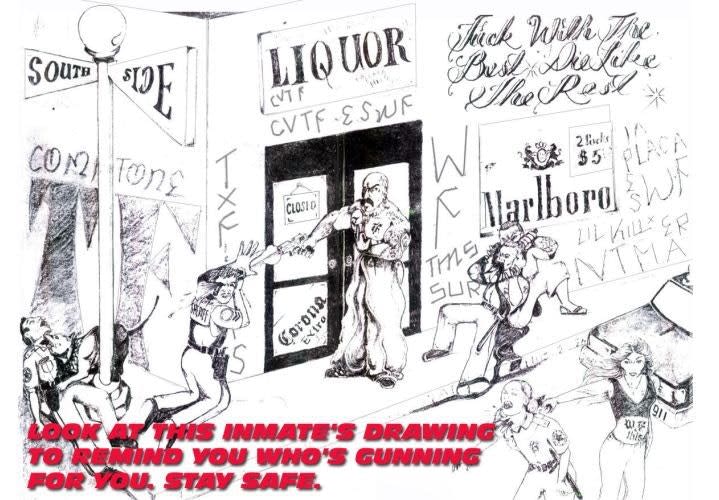It was actually an attempt to reduce collateral casualties in the gang wars that drew unfriendly public attention and heavy police response that was interfering with their lucrative drug business. The gangs were encouraged to continue killing in face-to-face "walk-ups."
But the drive-by tactic was a bad habit that was hard to break for old school Latino cholo gangs. Some young unsophisticated gang members failed to take the Mexican Mafia's edicts seriously. These gangsters became human pin cushions in jail after being arrested by the cops.
The Florence 13 (F-13) gang dates back to the early '50s and dominates a wide geographic area in South Los Angeles. This major Hispanic gang had expanded from its traditional Florence District to the southeastern suburbs of Cudahy, Bell Gardens, Maywood, Bell and Huntington Park. It had become an international, or "transnational," gang that spread across the country (a restaurant in New York bears the gang name) and into Europe, and South America. Florence drug dealers sold multiple kilos and had connections to major drug trafficking organizations in Mexico. But they are also Sureños loyal to the Mexican Mafia.
In October of 1995, Florence gang members Ricardo Perez, 21, Cesar Merino, 21, and Jose Munguia, 20, drove up to a Huntington Park residence. Jose Munguia opened up on the residence with an AK-47 from the vehicle. On the front porch, 11-year-old Erica Izquierdo was swinging on a hammock with her father when she was fatally hit in the head by the AK round. Luis Lopez, 15, and Adrian Garcia, 14, were also struck by the F-13's bullets, but they survived.
Ten days later, Perez and Merino got a visit from a Mexican Mafia member. The Eme member demanded to know just who had fired the fatal shots. Unlike in the American legal system, the two gang members did not have the right to remain silent, or not to incriminate themselves. They quickly ratted out their homeboy Munguia to their demon master.












